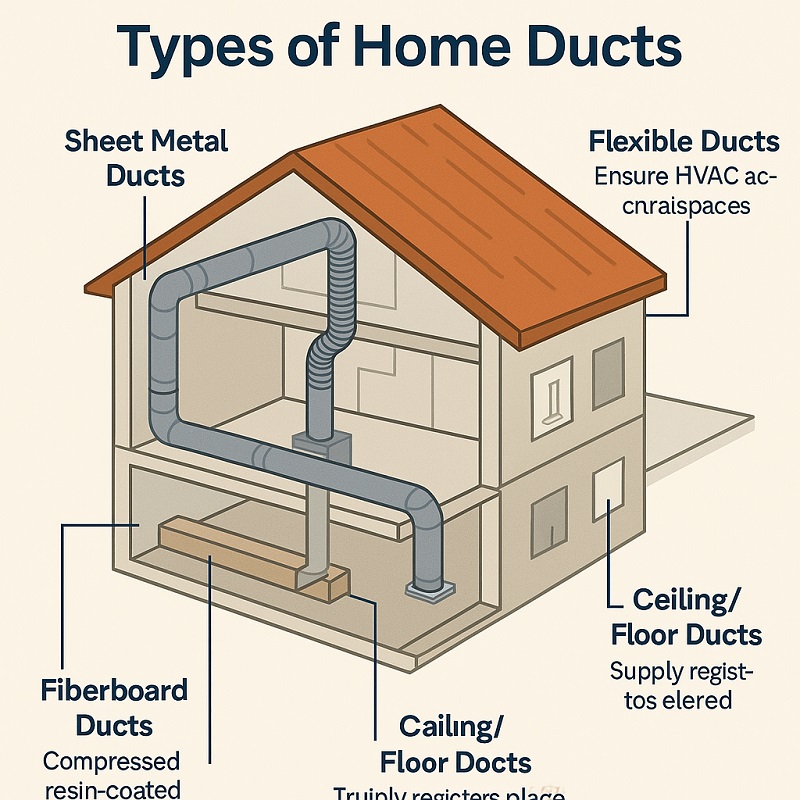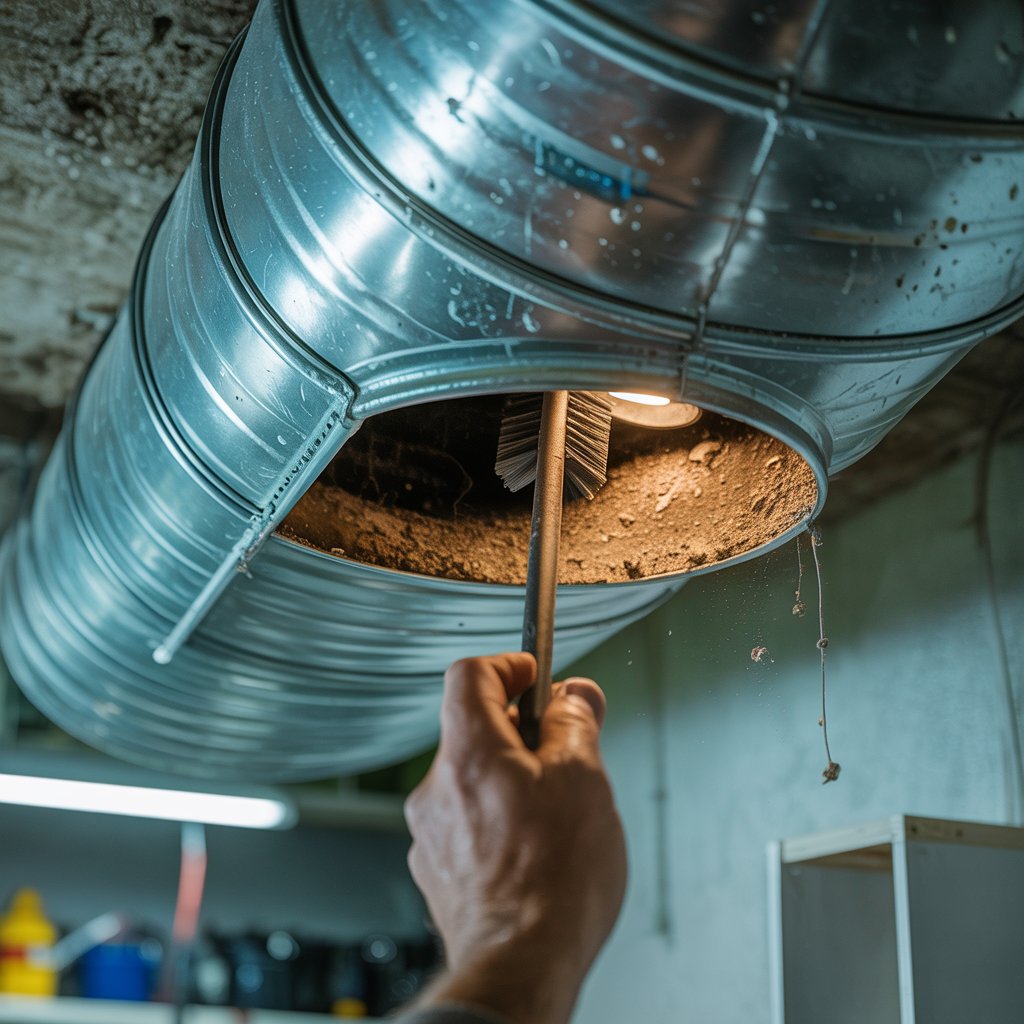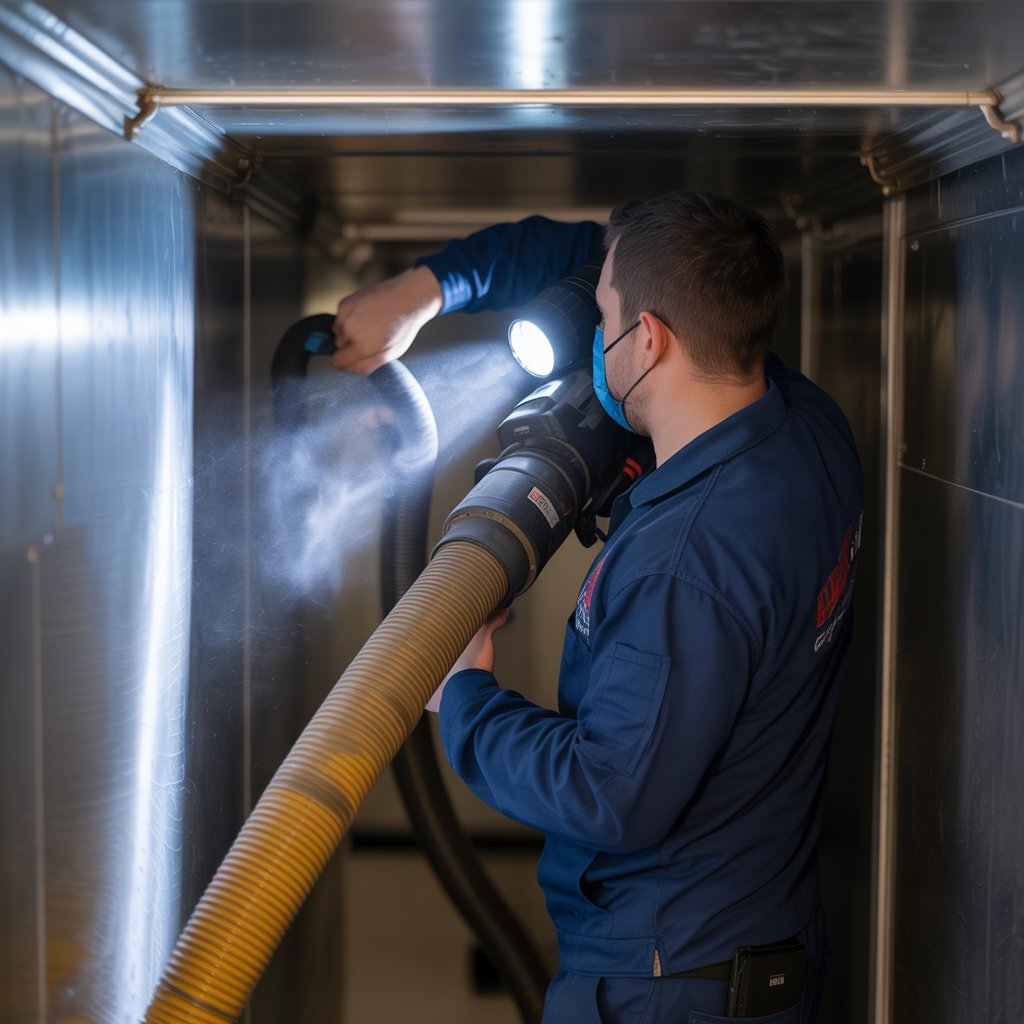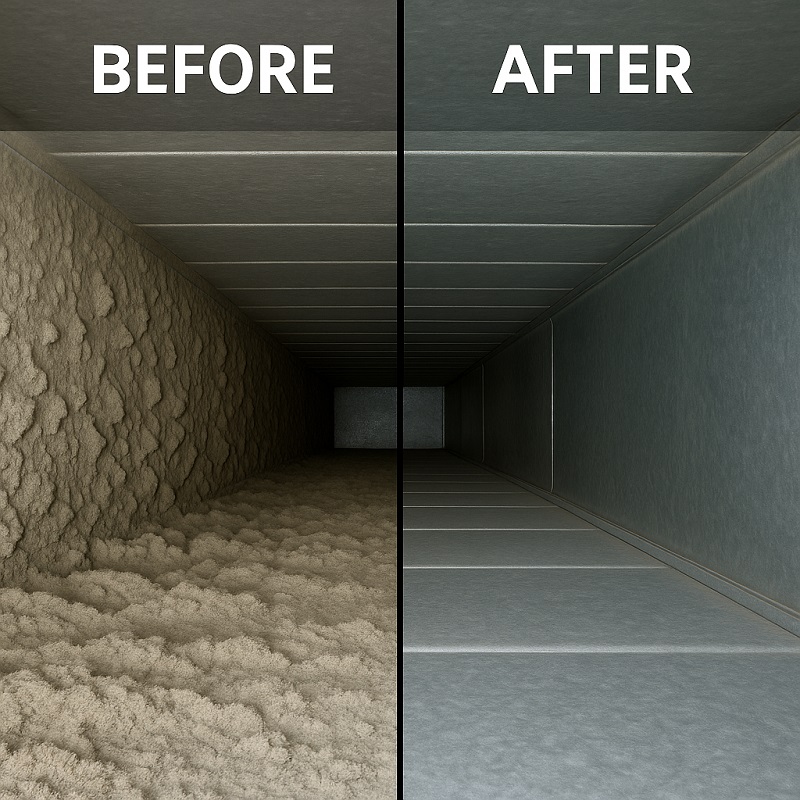✅ Quick Answer:
Duct cleaning can be a waste of money for some homes, especially if your HVAC system is clean and running efficiently. But it can be worthwhile in specific scenarios—like after a renovation, if you have mold, or if someone in the home has allergies. Always base the decision on need, not upsell pressure.
Why Homeowners Are Asking This Question in 2025
In today’s energy-conscious world, homeowners are re-evaluating everything from their insulation to their HVAC services. One topic that keeps coming up: Is duct cleaning worth the money—or just another industry upsell?
You’re not alone if you’ve felt uncertain. On one hand, you want clean air. On the other, you’ve probably heard mixed messages. Some techs recommend it religiously. Others say it’s unnecessary unless you spot specific issues.
So, let’s unpack the truth and answer the question based on logic, not marketing.
What Is Duct Cleaning, Really?
Duct cleaning is the process of removing accumulated dust, allergens, mold, and debris from your HVAC system’s air ducts. But not all ducts are the same — and understanding the type of ductwork in your home plays a key role in determining whether cleaning is necessary or beneficial.
Let’s break it down.

Common Types of Air Ducts in U.S. Homes
| Type of Duct | Description | Where It’s Found |
| Sheet Metal Ducts | Galvanized steel or aluminum; rigid and durable | Basements, attics, crawlspaces |
| Flexible Ducts | Plastic inner core with metal wire coil, insulated | Tight spaces, ceilings, closets |
| Fiberboard Ducts | Compressed resin-coated fiberglass panels | Older homes or budget installs |
| Ductboard (Insulated Panels) | Insulated panels cut and assembled onsite | New builds seeking higher R-values |
| Ceiling/Floor Ducts | Supply registers placed in ceilings or floors | Throughout the home, varies by region |
⚠️ Issues Faced by Each Type — And When Cleaning Makes Sense
1. Sheet Metal Ducts
- Pros: Durable, smooth interior resists mold, easy to clean
- Cons: Can develop rust or leaky joints
- When Cleaning Helps:
- After renovations (dust easily settles in bends)
- If mold or pests have entered the system
- Inspection Tip: Look for black streaks around joints (indicates leaks)
2. Flexible Ducts
- Pros: Easy to install, great for tight areas
- Cons: Easily crushed, punctured, or kinked — which traps debris
- When Cleaning Helps:
- After pest infestations (droppings, nests)
- If airflow seems blocked (debris or sagging)
- Risk: Too much pressure during cleaning can tear the duct — must use low-pressure tools
3. Fiberboard Ducts
- Pros: Cheap, good insulation
- Cons: Porous — absorbs moisture, encourages mold growth, hard to clean thoroughly
- When Cleaning Helps:
- Musty smells or visible black mold
- Allergy flare-ups even with clean filters
- Caution: Cleaning too aggressively can break down the surface
4. Ductboard (Pre-Insulated Panels)
- Pros: Energy efficient, low thermal loss
- Cons: Interior surface isn’t smooth — collects dust over time
- When Cleaning Helps:
- If not cleaned in over 7–10 years
- Post-renovation or construction debris
- Note: Best cleaned with soft-brush vacuum systems
5. Floor & Ceiling Ducts
- Pros: Efficient heat/cooling distribution
- Cons: Act as debris collectors — pet hair, dirt, allergens fall in
- When Cleaning Helps:
- If you see visible dirt at supply registers
- If airflow is noticeably reduced
How to Identify Which Ducts You Have
Most homeowners don’t know what type of ductwork they have — and that’s okay. You can:
- Ask your HVAC technician during a tune-up or repair
- Look at accessible duct sections in your attic, basement, or crawlspace
- Hire a duct cleaning company that does pre-cleaning video inspections
Not All Ducts Are Meant to Be Cleaned
- Some older ductboard and fiberboard systems may be too fragile.
- If there’s significant mold in fiberboard, replacement may be better than cleaning.
- Flex ducts with tears or major bends might need rerouting or replacing.
Inside the Toolbox: What’s Really Used in Professional Duct Cleaning?
Many homeowners hear “duct cleaning” and assume it’s just a guy with a shop vac and a long hose. But true, NADCA-compliant duct cleaning involves multiple industrial-grade tools, each playing a key role in removing dirt, allergens, and contaminants effectively.
Let’s break down the 4 core technologies and how they impact results:
1. Powerful Vacuums (High-Suction Extractors)
️ What They Are:
These are commercial-grade vacuums—not your standard wet/dry shop vac. Often truck-mounted or industrial portable units, they deliver 3,000 to 5,000 CFM (cubic feet per minute) of suction.
Purpose:
- Pull dust, dander, and particles out of the ductwork.
- Maintain constant suction as contaminants are dislodged by brushes or air tools.
✅ Pros:
- Removes fine particulates efficiently
- Prevents debris from re-entering the home
- Can handle long duct runs
⚠️ Risks:
- Low-grade vacuums (used by budget companies) may leave up to 50% of debris behind
- Inexperienced techs may damage duct interiors if using metal nozzles inside flex ducts
Tip for Homeowners:
Ask: “What type of vacuum system do you use — truck-mounted or portable?”
Truck-mounted systems usually offer better performance for large homes.
2. Rotary Brushes or Air Whips
️ What They Are:
- Rotary Brushes: Motorized heads with spinning bristles that scrub duct walls.
- Air Whips: Compressed air-powered hoses with flexible tentacles that “whip” and loosen debris.
Purpose:
- Dislodge caked-on dust, insulation fragments, or mold from duct walls
- Agitate contaminants so the vacuum can extract them
✅ Pros:
- Great for sheet metal and ductboard systems
- Can reach multiple bends and branch lines
- Scrubs away build-up that air alone can’t remove
⚠️ Risks:
- Not suitable for fragile flex ducts — brushes can tear the lining
- Cheap brush heads may leave bristles behind in ducts
Tip for Homeowners:
Avoid companies that use only suction without mechanical agitation.
NADCA recommends both air and mechanical cleaning for effective results.
️ 3. Negative Air Pressure Machines
️ What They Are:
A large machine that creates negative pressure throughout your entire duct system by sealing off vents and drawing air from a central point.
Purpose:
- Creates a vacuum effect, preventing contaminants from escaping into your home
- Ensures all debris flows toward the main extraction point
✅ Pros:
- Helps maintain a clean and safe indoor environment
- Ideal for multi-vent systems and large square footage
⚠️ Risks:
- Improper sealing can result in cross-contamination — particles escaping into your living spaces
- If vents aren’t isolated correctly, suction may be uneven and leave some debris behind
Tip for Homeowners:
During the service, you should see plastic barriers or vent covers on all supply and return registers — this means the negative pressure system is correctly set up.
4. Camera Scopes (Inspection Borescopes)
️ What They Are:
Flexible video cameras that techs insert into ducts to visually inspect before and after cleaning. Some systems have real-time monitor displays; others record video for client review.
Purpose:
- Confirm the presence of mold, blockages, or debris
- Show homeowners proof of cleaning results
✅ Pros:
- Increases transparency and trust
- Identifies problems that might need duct repair (like collapsed or disconnected ducts)
- Some companies offer before/after photo reports
⚠️ Risks:
- If a company won’t show visual proof, they may not have done much at all
- Older homes may have narrow bends where scopes can’t reach deeply
Tip for Homeowners:
Ask: “Will you show me video or photo evidence before and after cleaning?”
It’s your right as a paying customer — and good companies are happy to do it.
How These Tools Work Together — The “Full System Approach”
A reputable duct cleaning service should combine all four tools:
- Use the camera to inspect
- Set up the negative pressure machine
- Dislodge contaminants with brushes or air whips
- Extract everything with a high-suction vacuum
This approach follows the NADCA ACR Standard and ensures maximum results with minimal risk.
Homeowner’s Duct Cleaning Tool Checklist:
| Tool | Required? | Watch For |
| High-power vacuum | ✅ Yes | Portable okay for small homes, truck-mounted best |
| Rotary brush/air whip | ✅ Yes | Should NOT be used in flex ducts |
| Negative pressure system | ✅ Yes | Look for sealed vents and clear airflow direction |
| Camera scope | ✅ Yes | Ask for before/after proof of cleanliness |
When Duct Cleaning Really Is a Waste of Money
While the idea of cleaner air sounds great, there are plenty of cases where duct cleaning provides no real benefit.
❌ You Might Be Wasting Money If:
- Your HVAC system is under 10 years old and well-maintained.
- There are no signs of mold, rodents, or pests.
- You’ve never noticed odors, allergies, or excess dust.
- You’re being pushed into yearly cleanings without a valid reason.
- The service is offered for $99 or less — likely a “blow-and-go” scam.
Example: Jane in Illinois had her ducts cleaned in a 4-year-old home. No mold, no debris, and the service cost $350. She saw no air quality improvement or change in energy bills.
When Duct Cleaning Is a Smart Investment
There are definitely times when duct cleaning is absolutely worth it.
✅ It Makes Sense If:
- You’ve noticed musty odors coming from vents.
- There’s visible mold or mildew inside the ducts.
- Your home just underwent renovation or construction.
- You’ve had pest infestations like mice or insects.
- Someone in your home suffers from severe allergies or asthma.
- It’s been 8–10 years or longer since the last cleaning.
Pro Tip: Ask for a camera inspection before approving a cleaning job. Reputable providers offer visual proof.
Does Duct Cleaning Improve HVAC Performance?
This is one of the biggest misconceptions. The idea is: cleaner ducts = better airflow = lower bills. That’s partly true.
What the Evidence Says:
- If the ducts were significantly clogged, airflow might improve slightly.
- It can reduce strain on the blower motor, helping extend system life.
- However, leaky ducts, blocked filters, or undersized systems often cause more performance issues than dirt.
Before vs. After (Hypothetical):
| Factor | Before Cleaning | After Cleaning |
| Airflow Efficiency | 85% | 88% |
| Dust at Registers | Visible | Minimal |
| Monthly Energy Bill | $165 | $160 |
Small changes, unless buildup is severe.
Cost Breakdown – What You’re Paying For
On average, duct cleaning costs between $300 and $700 in the U.S. But not all services are created equal.
What Impacts Cost:
- Home size (more ducts = more cleaning)
- HVAC system age and layout
- Whether mold remediation is needed
- NADCA-certified professionals vs. handymen
Watch Out For: $99 offers or “free inspection” promos that lead to hard sells.
✅ Tip: Always get multiple quotes and check reviews.
Alternatives That Might Give You More ROI
If you’re unsure whether duct cleaning is necessary right now, consider higher-ROI options:
✅ Try These First:
- Replace air filters every 60–90 days (or monthly if pets).
- Install a UV purifier to kill microbes inside the air handler.
- Seal duct leaks — Energy Star estimates 20–30% air loss from leaky ducts.
- Book a full HVAC tune-up instead of duct cleaning.
Often, these fixes lead to better energy savings and improved air quality than cleaning alone.
Duct Cleaning vs. HVAC Tune-Up vs. Duct Sealing
| Feature / Service | Duct Cleaning | HVAC Tune-Up | Duct Sealing |
| Primary Goal | Remove dust, mold, and debris from ductwork | Ensure HVAC components are working efficiently | Seal leaks to stop air loss and improve airflow |
| Average Cost (USA) | $300–$700 | $100–$300 | $1,000–$2,000 (whole home) |
| Frequency Needed | Every 5–7 years (or as needed) | Once or twice per year | Once every 15–20 years |
| Best For | Mold, pest issues, or post-construction debris | Seasonal efficiency, preventing breakdowns | High energy bills, poor airflow, leaky ducts |
| Typical ROI | Low to moderate unless major buildup exists | High — improves performance and lowers utility costs | Very high — saves up to 30% on energy bills |
| Improves Air Quality? | Yes, if contaminants are present | Indirectly (clean coils, better airflow) | Yes — reduces dust from leaks |
| Improves Energy Efficiency? | Slightly, only if ducts were blocked | Yes — improves system operation | Yes — significantly reduces wasted energy |
| DIY-Friendly? | ❌ No — professional equipment needed | ⚠️ Partially (filter change, visual checks) | ❌ No — requires diagnostic tools and sealing material |
| Downside | May be unnecessary if ducts are already clean | Needs regular scheduling to stay effective | Higher upfront cost, but long-term payback |
Pro Tip:
Combine all three: A sealed duct system, regularly tuned HVAC unit, and clean airflow path deliver the best long-term comfort, health, and efficiency.
How Often Should You Clean Your Ducts?
There’s no one-size-fits-all rule. Most guidelines suggest every 3–5 years, but only if needed.
Consider More Frequent Cleanings If:
- You have pets that shed
- Someone smokes indoors
- You live in a wildfire-prone area
- There are allergy sufferers in the home
Timeline Snapshot:
| Household Type | Suggested Frequency |
| Pet-free, no allergies | Every 5–7 years |
| Pet owners | Every 3–5 years |
| Smokers or sensitive lungs | Every 2–3 years |
Real Customer Stories – When It Helped, When It Didn’t
Case 1: Allergy Relief
The Martins in Ohio had two cats and a daughter with asthma. After duct cleaning, her coughing improved. Their technician showed piles of dander removed.
Case 2: No Results
Tyler in Arizona paid $400 but felt no change. His ducts were clean, but the company didn’t inspect first.
Case 3: Post-Reno Cleanup
Cynthia remodeled her kitchen and had drywall dust everywhere. The duct cleaning helped eliminate fine particles that regular filters missed.
Tips Before You Book a Duct Cleaning Service
Want to avoid scams and make sure it’s worth it? Follow these tips.
✅ Checklist Before Booking:
- Ask if the company is NADCA-certified
- Request before-and-after photos
- Never say yes to cold calls or flyers
- Don’t sign up for annual cleaning plans
- Ask your regular HVAC technician if it’s needed
Final Verdict: Is Duct Cleaning a Waste of Money?
It depends.
If your system is new, clean, and running well—yes, it’s probably a waste.
But if you’re seeing signs like musty odors, high dust levels, or allergy symptoms—it could be a smart, health-conscious choice.
Bottom Line: Make the decision based on need, not sales pressure. Pair it with a solid HVAC maintenance plan for best results.
Key Takeaways
- Duct cleaning is not a magic fix—but it has value in the right scenarios.
- Beware of scams or overly frequent services.
- Consider alternatives like sealing ducts or improving filtration.
- Always base decisions on inspection, not impulse.
❓ FAQs
Q1: Does duct cleaning reduce energy bills?
Only slightly—and only if ducts are heavily clogged. For bigger savings, focus on sealing leaks or updating filters.
Q2: Will it help with pet dander and hair?
Yes, especially if you have shedding pets. Just be sure your ducts actually need cleaning.
Q3: How do I know if my ducts are dirty?
Look for musty odors, visible dust at vents, and increased allergies. A camera inspection can confirm.
Q4: Is DIY duct cleaning effective?
Basic dusting is fine, but full cleaning needs pro-grade tools and know-how. DIY won’t remove deep buildup.
Q5: Does insurance cover duct cleaning?
Usually not. It’s considered a maintenance task, not a repair.







